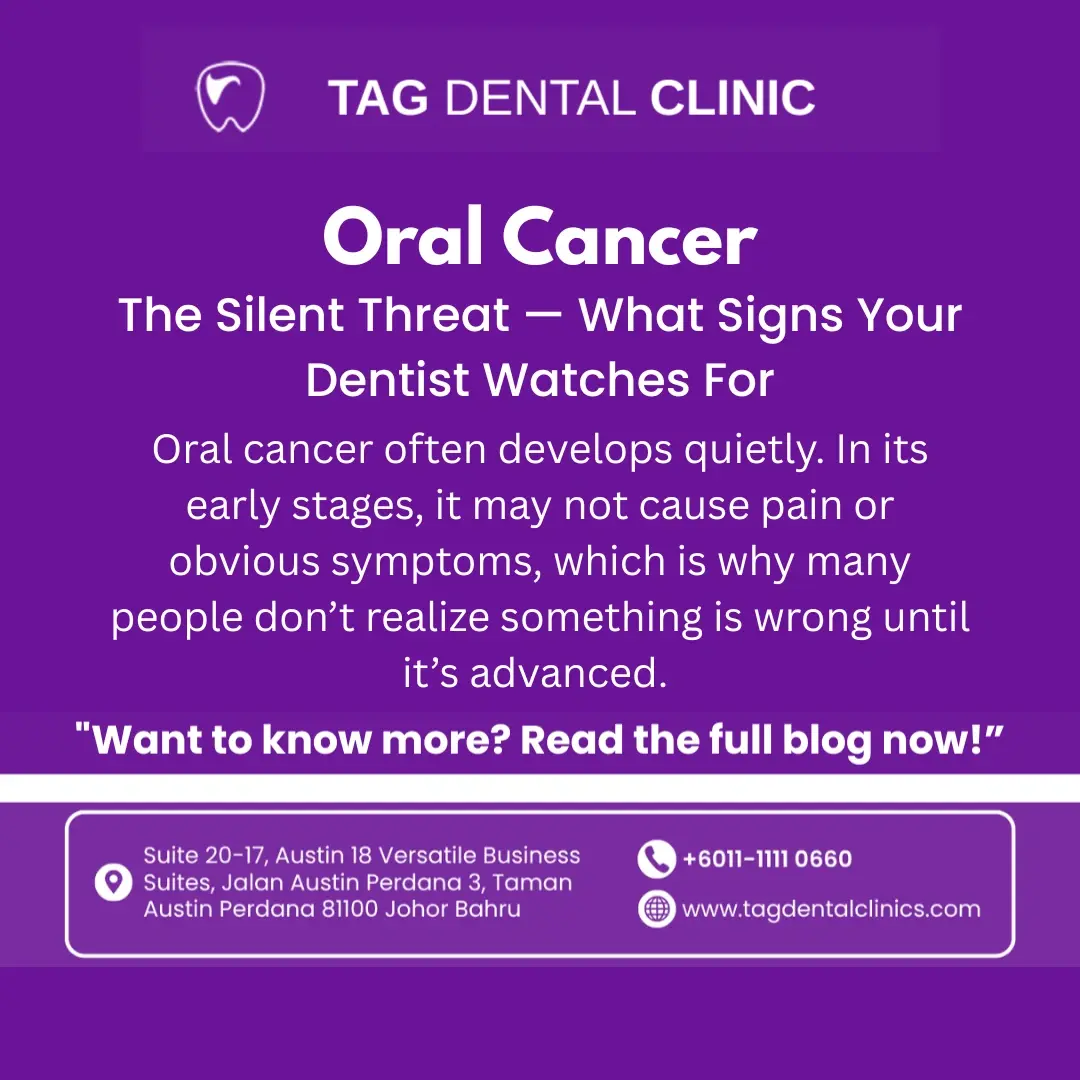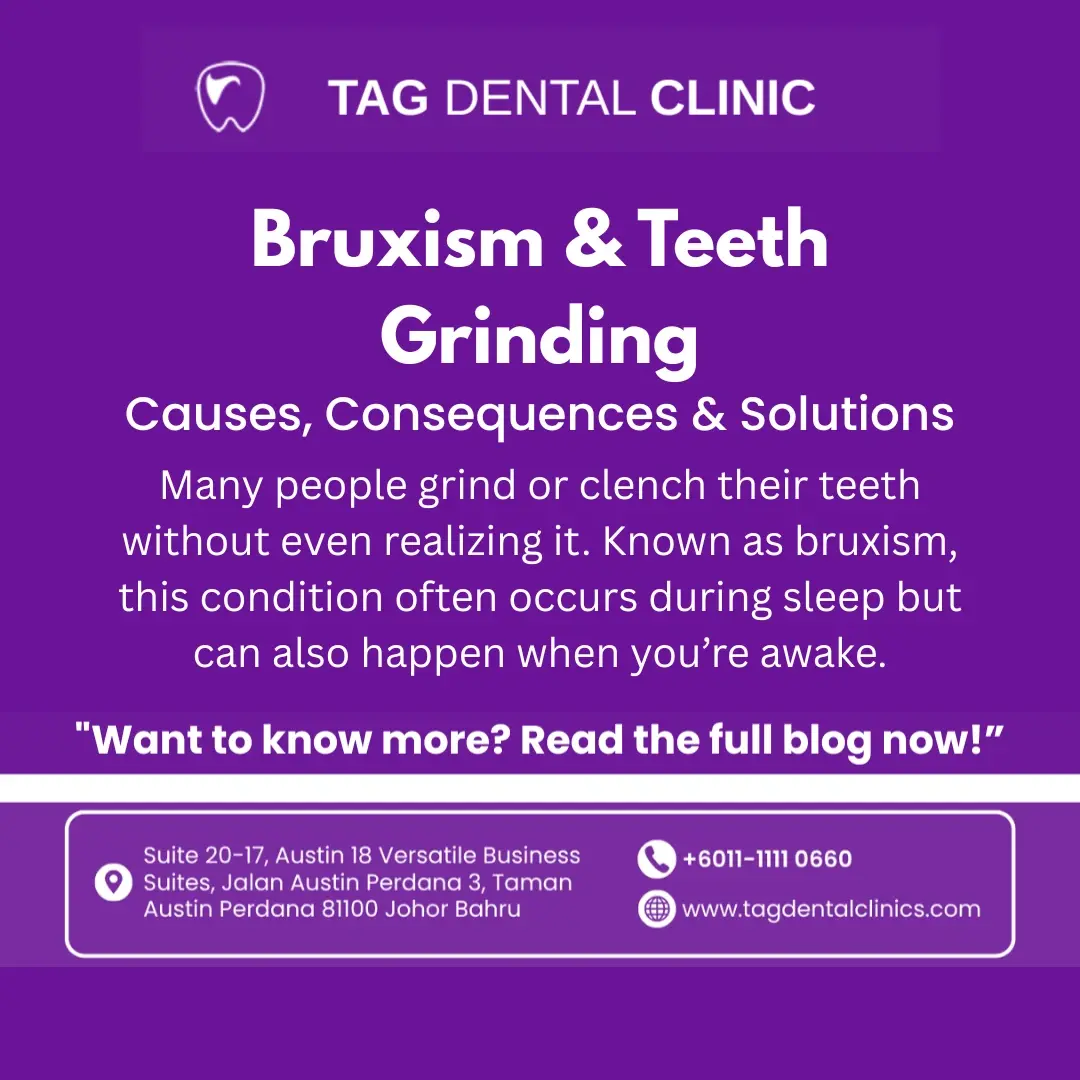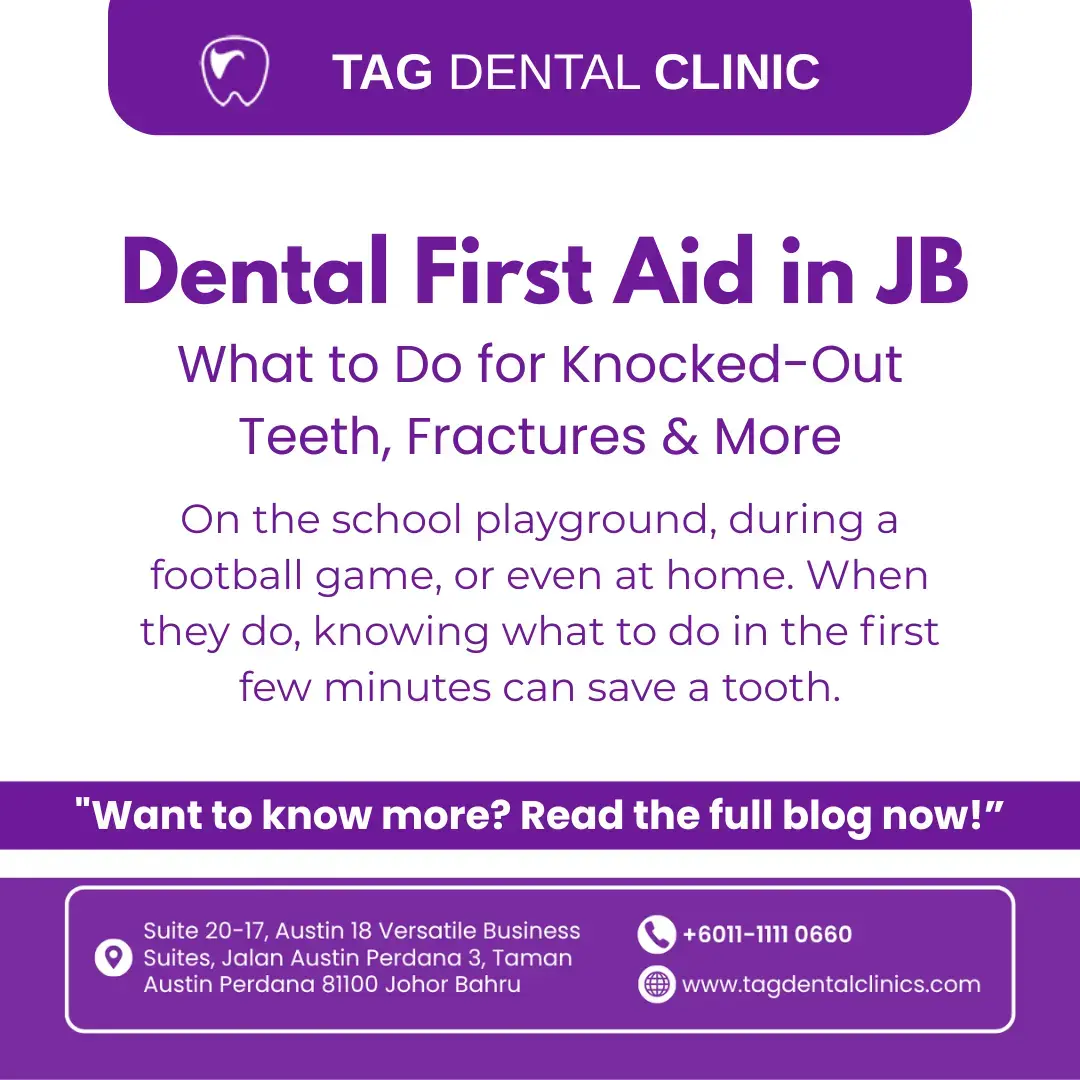Oral Cancer: The Silent Threat — What Signs Your Dentist Watches For
Table Of Content

Introduction: Why Oral Cancer Is Called a Silent Threat

Oral cancer often develops quietly. In its early stages, it may not cause pain or obvious symptoms, which is why many people don’t realize something is wrong until it’s advanced. This makes early detection critical — and dentists play a key role in spotting warning signs during routine check-ups.
Key Red Flags Your Dentist Watches For

Dentists are trained to look for small changes that patients might overlook. Warning signs include:
- Persistent mouth sores or ulcers that don’t heal after 2 weeks
- Red or white patches inside the mouth
- Unusual lumps, bumps, or thickened tissue in the cheek, gums, or tongue
- Chronic sore throat or hoarseness
- Difficulty chewing, swallowing, or moving the tongue
- Numbness in the tongue or lips
- Unexplained bleeding in the mouth
Risk Factors for Oral Cancer

1. Tobacco Use
Cigarettes, cigars, pipes, and chewing tobacco are among the biggest risk factors.
2. Alcohol Consumption
Heavy drinking, especially when combined with tobacco use, significantly raises the risk.
3. Human Papillomavirus (HPV)
Certain strains of HPV, particularly HPV-16, are linked to cancers of the throat and tongue.
4. Age and Gender
Oral cancer is more common in people over 40 and slightly more common in men.
5. Sun Exposure
Excessive sun exposure increases the risk of cancer on the lips.
The Dentist’s Role in Oral Cancer Screening

At every check-up, dentists do more than check for cavities. They also perform an oral cancer screening, which may include:
- Visually examining the tongue, cheeks, gums, and throat
- Feeling for unusual lumps or thickened areas
- Checking for ulcers or patches that don’t heal
- Asking about symptoms like pain, numbness, or swallowing difficulty
If something suspicious is found, your dentist may monitor the area or refer you to a specialist for a biopsy.
Biopsy for Definitive Diagnosis
If your dentist spots a suspicious area that doesn't resolve itself or looks concerning, the next step for a definitive diagnosis is often a biopsy. A biopsy is a quick, minimally invasive, and usually painless procedure where the dentist or a specialist gently harvests a very small sample—often measured in just a few millimeters—from the potentially affected tissue. This small sample is then sent to a lab for microscopic analysis. It is the only reliable way to determine if the cells are cancerous, and it is a crucial, high-priority step if a potential threat is identified.
When to See a Dentist Immediately

You should schedule a dental visit right away if you notice:
- A mouth sore that doesn’t heal within 2 weeks
- Persistent white or red patches
- Pain or swelling in the mouth or jaw
- Sudden changes in your voice or swallowing ability
How to Lower Your Risk of Oral Cancer

- Avoid tobacco in all forms
- Limit alcohol consumption
- Protect lips with SPF lip balm when outdoors
- Eat a diet rich in fruits and vegetables
- Brush 3 times a day and floss daily to keep tissues healthy
- Visit your dentist regularly for screenings
10 FAQs About Oral Cancer

Not always. Many early cases cause no pain, which is why regular check-ups are important.
2. Can a dentist detect oral cancer during a routine visit?Yes. Dentists are trained to look for early signs and may refer you for further testing if needed.
3. What is the most common location for oral cancer?The tongue, lips, and the floor of the mouth are the most common sites.
4. How often should I have an oral cancer screening?Every dental check-up includes a screening, so visiting your dentist twice a year helps.
5. Does HPV always cause oral cancer?No, but certain HPV strains increase the risk. Not everyone with HPV develops cancer.
6. What age group is most affected by oral cancer?It’s most common in adults over 40, but younger people with HPV can also be affected.
7. Can poor oral hygiene cause oral cancer?Poor hygiene alone doesn’t cause it, but chronic irritation from plaque and gum disease can contribute to risk.
8. Are mouth ulcers always a sign of oral cancer?No. Most ulcers are harmless, but any sore lasting more than 2 weeks should be checked.
9. How is oral cancer treated?Treatment may involve surgery, radiation, chemotherapy, or a combination, depending on the stage.
10. Can oral cancer be prevented completely?Not completely, but avoiding tobacco, limiting alcohol, and attending regular dental screenings greatly reduce the risk.
Conclusion: Don’t Ignore the Small Signs

Oral cancer may start silently, but early detection makes a big difference in treatment and recovery. Dentists are on the front line of identifying these signs, often before patients notice them.
If you spot unusual changes in your mouth, don’t wait — schedule a check-up at TAG Dental Clinic Johor Bahru for a thorough evaluation. Protecting your smile could also mean protecting your life.




